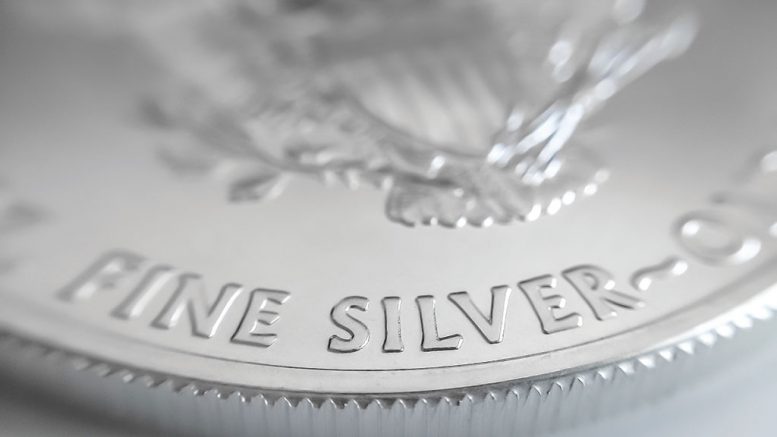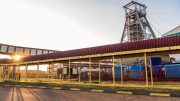Silver prices rose 30% from US$15.25 per oz. at the end of June 2019 to as high as US$19.75 per oz. by Sept. 4. The most important aspect of this was that the move was based on very little investment demand for physical silver.
Traditionally, investors buying physical silver has been the single most important driver of silver prices. When investors were buying very little, or were actually net sellers as a group, as they were from the late 1980s through 2005, silver prices have fallen. When investors were buying a lot of physical silver, as they did from 2008 until 2016, prices tend to rise or stay high.
Over the past two years, silver investment demand has been lower than at any time since 2005. Prices showed this for most of 2018 and 2019, but then began rising in July and August. We must be very specific here: silver prices rose sharply in the second half of July and through August, but then fell back to US$17.00 per oz. by the beginning of October and US$16.56 per oz. by early December. The price rally was in July and August. It resumed in January 2020, but that’s part of another story. First, let’s analyze honestly what happened in July and August.
The reason for the strength in silver prices during the second half of July and across August, was the action of market participants rolling forward massive short open interest positions in the September Comex silver futures contract. On July 17 there were 818.7 million ounces of open interest in the September Comex silver futures contract. There were 92.6 million ounces of physical silver deposits registered with the Comex Clearinghouse, and another 214.0 million ounces of silver that met Comex specifications and were held in Comex registered depositories, but which were not registered with the Clearinghouse. Those traders and investors who were short the September contract needed to deliver physical silver, buy the short positions back, or roll them forward. Mostly they rolled forward into the December contract.
While there were 818.7 million ounces of short silver futures rolled forward, ETF purchases were around 28 million ounces and coin sales were around one million ounces. By this measure, 96.6% of the buying pressure on silver were futures market participants who were rolling their short positions forward, instead of physical investors buying metal.
There are people in the silver market who deny this, speaking from their positions as producers or silver investment product marketers, but this is the quantifiable reality. As Bernard Baruch said, each person is entitled to his or her opinion but no one has a right to be wrong in his or her facts.
When marketing types deny reality to try to sell their product, they ultimately disappoint their customers. Often they do not care about that, however. But disappointed customers sometimes stop buying that product. This has been happening with physical silver.

Facilities at Pan American Silver’s La Colorada silver-gold-lead-zinc mine in Zacatecas, Mexico. Credit: Pan American Silver.
That is where the silver market was in the third quarter of last year, and that is what kick-started the silver price higher.
This did not stop silver promoters from touting a new silver bull market in the hopes of convincing disenchanted investors to return to the physical silver market.
Furthermore, one needs to realize that while prices rose sharply in the third quarter, and were up around 3.2% on an annual average basis in 2019, the rise in prices was contained within the broad sideways trading range that silver has maintained since falling sharply from 2012 to 2015. The rally took silver back to the high-end of this range, but no further. After the September Comex contract roll was over, silver prices fell, trading between US$16.50 per oz. and US$18.50 per oz. for most of the rest of 2019 into 2020. Silver prices continue to bounce along a base that has persisted for the past five years.
All of that said, the silver market stands at an interesting position at the beginning of 2020. The reality of the silver price increase contains both bad and good information related to silver’s future price prospects. It is bad that investment demand is so low. But it is good that prices rose even in an absence of any such demand. The fact that prices rose sharply in the absence of physical investment demand suggests that when (not if) physical investment demand revives, silver prices may rise more forcefully than otherwise might be expected. If the market is tight enough to rise without their buying, it will react to any renewed interest in physical silver that much more forcefully.
It should be noted that short- and long-term investors were buying metal through silver ETFs last year. It just was not the main factor pushing silver prices higher. During the rise in prices ETF demand was more subdued. Silver ETF holdings did reach record highs at the end of August 2019. Between June and August investors added 122.12 million ounces of silver, mostly in June and early July before prices began rising most sharply. They pulled back from buying as prices rose. And then they flipped over and became net sellers for the balance of the year, but those sales amounted to 29.6 million or 24% of what was added between June and August. For the full year, net additions to ETFs were at 85.8 million ounces, which was the largest level of net additions since 2010.
It’s also important to point out that while silver ETF investors were large net buyers of the metal during 2019, demand was being fulfilled by reductions in unreported private investor bar stocks and was coupled with a lack of fresh demand for coins and bars.
That is the reality silver is facing as it moves through 2020. In 2018 and 2019 investor demand for physical silver, which typically drives prices higher or lower, was at its lowest level since 2005. Even so, the price started to rise. Marketing shills say that investment demand has been strong, but they are distorting reality to try to sell silver to investors.
Investment demand is projected to remain low in 2020. The same factors that have turned investors off over the past three years, keeping prices ‘down,’ are extending into this year.
- Silver has disappointed investors.
- Many investors previously lured into buying silver by the distorted commentary of marketing groups have fled the silver market out of disenchantment at the failure of these metals to achieve the unrealistic prices promised by marketeers in the past.
- Other long-term silver investors have been passing away, and their estates have been selling off the silver.
- Many investors have given up on silver and gold, while others have re-focused on shorter term trading rather than long-term buying and holding silver.
In this environment silver prices have languished. They probably will continue to rise modestly in 2020 but will be restrained by a lack of investment demand for physical silver in the absence of compelling economic, financial market, or political reasons to stock up on silver and gold.
CPM projects that silver prices might rise around 11.7% in 2020 on an annual average basis, to around US$18.12 per oz. for the full year. Further price increases are expected later.
Mine production is projected to be flat to slightly lower, while secondary recovery from scrap may rise somewhat due to increased recycling of spent electronics and other silver-bearing products due to heightened environmental awareness, more stringent recycling laws, and somewhat higher silver prices. Fabrication demand is projected to increase perhaps 1.6% in 2020 from 2019’s level of demand.
Further price increases are expected, but beyond 2020, and only when long-term investors resume buying larger volumes of physical silver. When that happens, silver prices could rise dramatically. It may be several years before that happens. Meanwhile silver prices are expected to rise modestly.
— Jeffrey Christian is the managing partner of CPM Group, a commodities research and management consulting and financial advisory firm in New York. He founded the company in 1986, spinning off the Commodities Research Group from Goldman Sachs & Co., and its commodities trading arm, J. Aron & Company.






Be the first to comment on "Commentary: Silver price strong despite less investment demand"